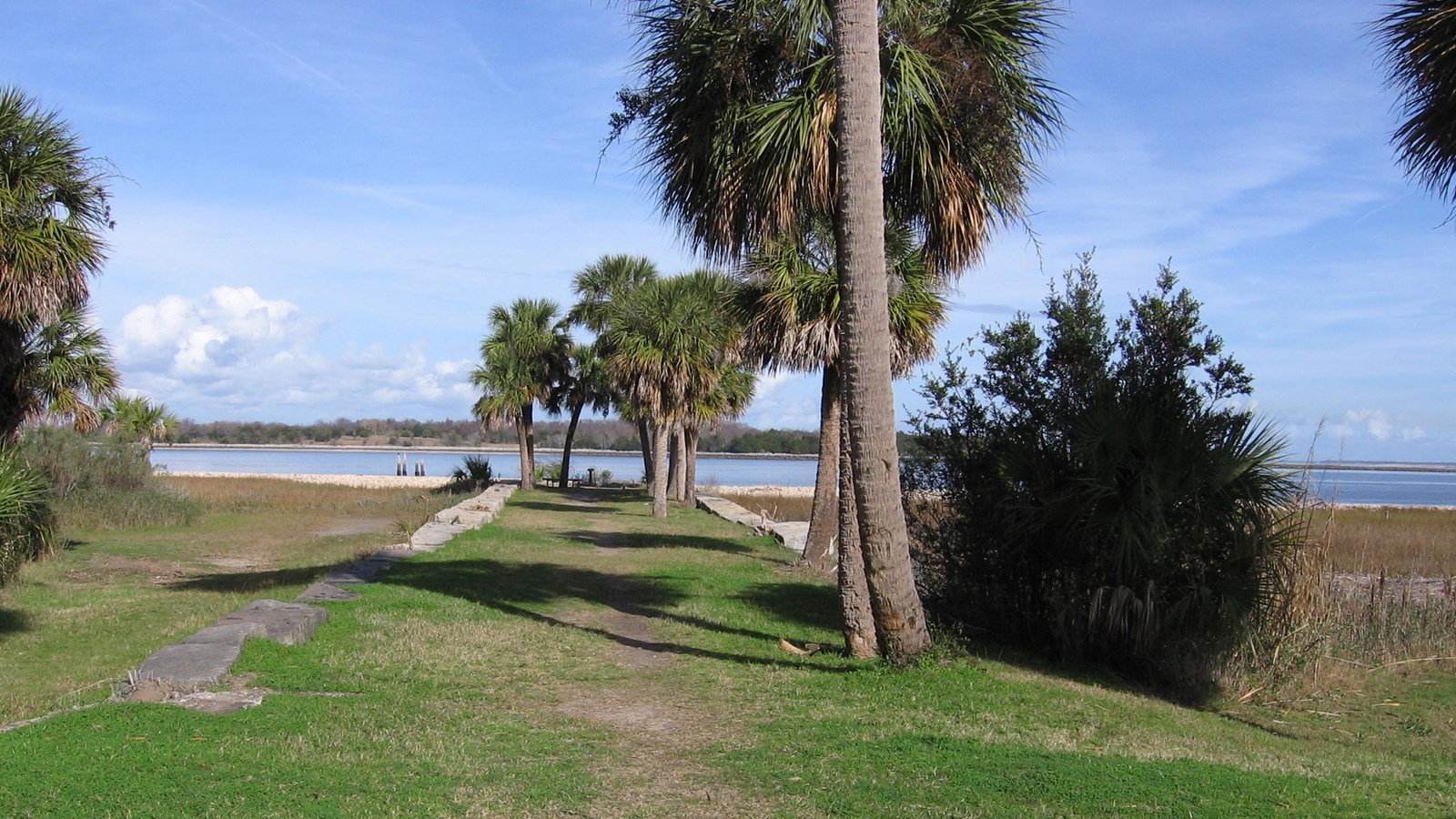As you stand at the North Pier of Cockspur Island you can see glimpses of it’s past. This is the place where in the early 1800’s ships would dock with supplies to build Fort Pulaski. Notice the outline of the former pier and the iron rings that crew members used to secure the vessel’s ropes while they were docked.
The water in front of you is the North Channel of the Savannah River. This is the route that huge container ships from all over the world use to make their way into the port of Savannah, which is America’s 3rd largest port. Cockspur Island was chosen as the location for Fort Pulaski because of this exact reason. It was built to protect this entry way into the mouth of the Savannah River.
As consumer demands have grown, so have the size of the ships that pass by here. To make room for these larger ships dredging or digging is done into the bottom of the river. Over time this channel has gone from 8 feet deep to now almost 50 feet deep.
These large container ships can cause dangerous conditions for unsuspecting visitors who walk the shoreline. When a ship moves past this area it moves a whole lot of water out of its way. That water moves out and then rushes back into the shoreline as the ship passes. Be very careful that you or your belongings don’t become swept out. Look both ways for ships before getting close to the water’s edge and remember this is an active shipping channel so swimming is prohibited for both humans and pets.
This section of the park presents endless amounts of wildlife viewing for those who aren’t in a rush. If you stay long enough you might spot a dolphin sewing the surface of the water, a pelican diving for food, or a cannonball jellyfish drifting about in the current.
On the sandy shoreline you may see horseshoe crabs, hermit crabs, or any number of shorebirds who come here specifically to nest and to rest. In the fields of cordgrass that surround the North Pier you can find periwinkle snails walking up and down the thick blades of grass.
Look a little closer and you may see an oyster squirting out water that it filtered through for food, a blue crab feasting with the use of its beautiful turquoise claws, or thousands of fiddler crabs marching around the mud flats at low tide. The males waving their larger claws in the air looking for a mate.
This delicate yet completely self-sustaining ecosystem is one of the most rapidly disappearing environments on our planet due to habitat loss. Coastal salt marsh such as the one you see here is not only a place of shelter and nourishment for animals, but it is vital to humans as well.
Salt marsh helps keep our fishing industry booming, reduces the effects of coastal erosion, filters the water of impurities, and absorbs the impact of storm damage that hurricanes can lash out as they come crashing ashore. Before you move on take a few moments to observe, smell, listen, and feel the significance of this place.

